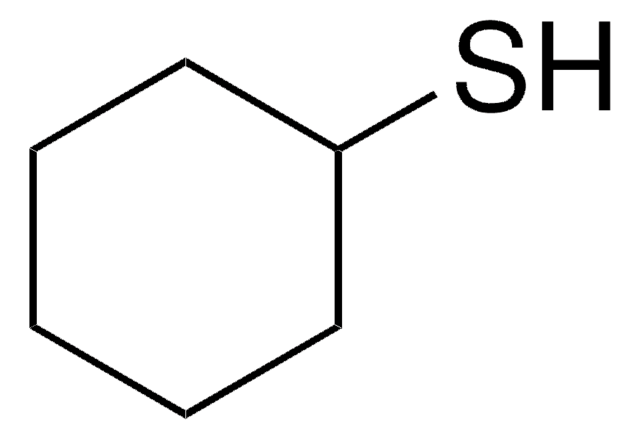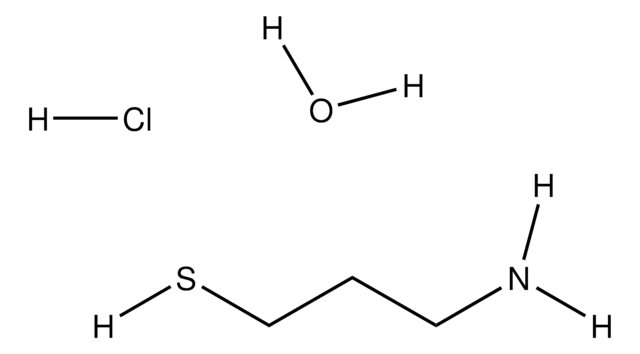Wichtige Dokumente
C68601
3-Chlor-1-Propanethiol
98%
Synonym(e):
γ-Chloropropyl mercaptan, 3-Chloropropan-1-thiol, 3-Chloropropanethiol, 3-Chloropropyl mercaptan
About This Item
Empfohlene Produkte
Assay
98%
Form
liquid
Brechungsindex
n20/D 1.4921 (lit.)
bp
145.5 °C (lit.)
Dichte
1.136 g/mL at 25 °C (lit.)
SMILES String
SCCCCl
InChI
1S/C3H7ClS/c4-2-1-3-5/h5H,1-3H2
InChIKey
TZCFWOHAWRIQGF-UHFFFAOYSA-N
Suchen Sie nach ähnlichen Produkten? Aufrufen Leitfaden zum Produktvergleich
Verwandte Kategorien
Allgemeine Beschreibung
Anwendung
- Solution-Phase Hybrid Passivation: 3-Chloro-1-propanethiolis used in the passivation of quantum dots to enhance the performance of infrared-band gap quantum dot solar cells, suggesting significant improvements in efficiency and stability (Mahajan et al., 2020).
Signalwort
Warning
H-Sätze
Gefahreneinstufungen
Eye Irrit. 2 - Flam. Liq. 3 - Skin Irrit. 2 - STOT SE 3
Zielorgane
Respiratory system
Lagerklassenschlüssel
3 - Flammable liquids
WGK
WGK 3
Flammpunkt (°F)
109.4 °F - closed cup
Flammpunkt (°C)
43 °C - closed cup
Persönliche Schutzausrüstung
Eyeshields, Faceshields, Gloves, type ABEK (EN14387) respirator filter
Hier finden Sie alle aktuellen Versionen:
Besitzen Sie dieses Produkt bereits?
In der Dokumentenbibliothek finden Sie die Dokumentation zu den Produkten, die Sie kürzlich erworben haben.
Kunden haben sich ebenfalls angesehen
Global Trade Item Number
| SKU | GTIN |
|---|---|
| C68601-1G | |
| C68601-25G | |
| C68601-5G | 4061837867811 |
Unser Team von Wissenschaftlern verfügt über Erfahrung in allen Forschungsbereichen einschließlich Life Science, Materialwissenschaften, chemischer Synthese, Chromatographie, Analytik und vielen mehr..
Setzen Sie sich mit dem technischen Dienst in Verbindung.













